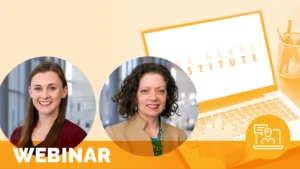Breaking the transactional mindset: A new path for healthcare leadership built on a commitment to human experience
Published November 10, 2023


The purpose of this paper is to review the dominance of transactional business mindsets and practices today that may foster those challenging environments and assert that the use of Service-Dominant Logic (SDL) demonstrates the importance of human relations in developing effective and sustainable organizational performance. Ultimately it can help us lead differently at all levels as we work to transform the human experience in healthcare.
Related content
-
Culture & Leadership | Quality & Clinical Excellence | Staff & Provider Engagement
Remediation Strategies to Reduce Shame and Stratify Support for Providers in Patient Experience
Published November 19, 2024

This webinar will review evidence regarding remediation of communication skills in healthcare providers, shame in healthcare, and how the two intersect. The experience at our institution includes two pilot programs designed for providers and entire clinics with suboptimal patient experience scores. We will present stepwise strategies, lessons learned, and qualitative and quantitative data that are
Learn more -
Culture & Leadership | Staff & Provider Engagement
Real-Time Coaching & Feedback: At-The-Elbow Support for Success
Published March 20, 2025

Unlock the power of coaching to inspire, engage, and gain buy-in from your team. In this interactive webinar, you’ll hear from nursing and physician leaders on how they leveraged practical coaching techniques to build trust, foster accountability, and align your team around shared goals. Discover strategies to overcome resistance, communicate with influence, and create a
Learn more -
Culture & Leadership | Innovation & Technology | Staff & Provider Engagement
Human-Centered Leader Rounding: Using Generational Insights and Personalization
Published November 26, 2024

Complimentary – Explore how healthcare leaders can design and adapt their rounding processes to cater to different patient and employee generations, combining generational data with a personalized approach that is specific to the individual. The discussion will focus on personalized care, communication preferences, and bridging generational gaps in expectations through a human-centric approach that prioritizes
Learn more
